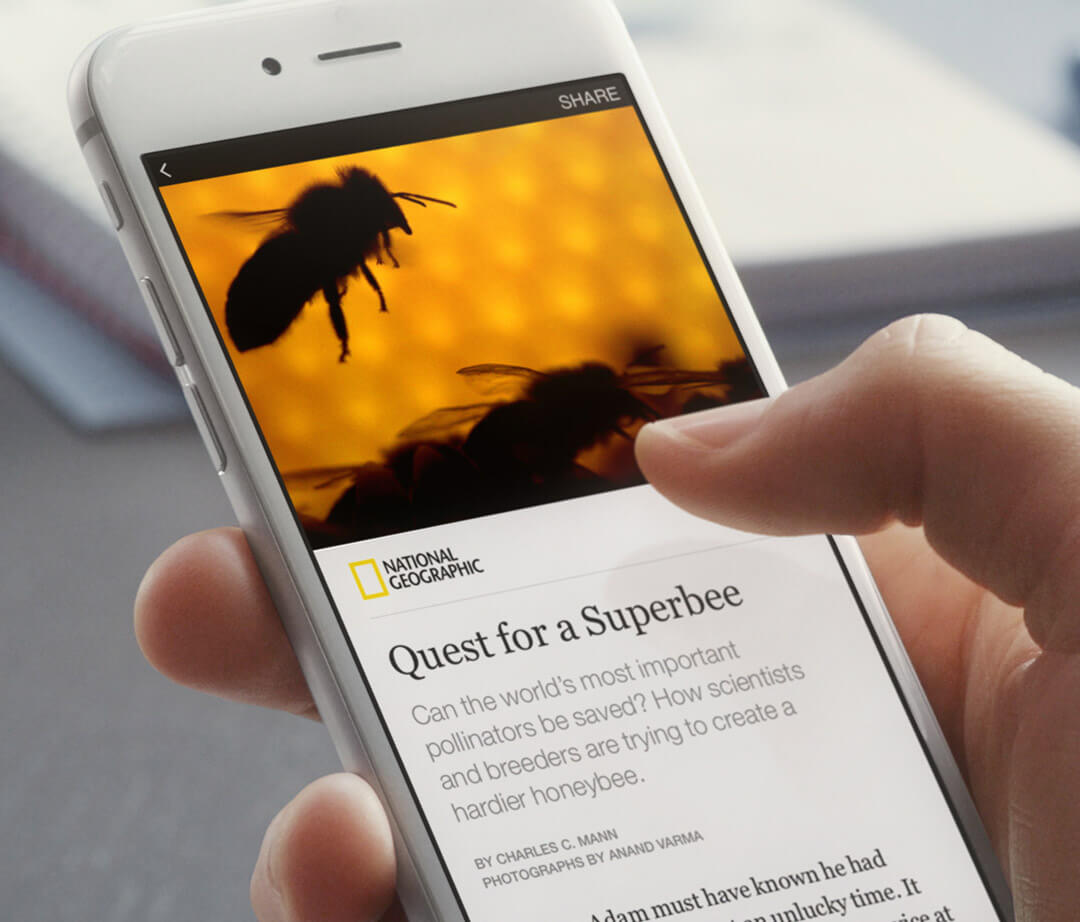
Forget Native Advertising, Welcome to Native Publishing
Why your website doesn’t matter anymore
Being an online media publisher is a fairly straightforward proposition. Build a website, create great content, attract an audience and sell advertising. It’s been the way since the internet was born.
This basic business model hasn’t changed in over 20 years. Sure, there has been a shift from direct traffic and search to social media, but that is just a different way in which people discover your website. Almost every dollar a media publisher generates still comes from the ads served on their own website pages.
Yes, there is also a big movement from banner ads to native ads, but again that’s simply a different creative execution; a paid article instead of a paid ad. You are still monetizing the same audience you always were, albeit with a slightly different look.
Everything is about to change.
What if your audience never visited your website at all? What if you kept pumping out great content and people kept consuming it in droves but they did it far away from the website that you operate.
The entire model breaks down.
No traffic to your website = no money. Online publishers don’t sell the content, they sell the audiences that consume it. The publisher business model assumes that those audiences are consuming it within the walls of the publisher’s website, where they control the advertising placements. In today’s content consumption model, the website itself will soon be reduced to merely a database of stories, a glorified RSS feed for the social media platforms and the aggregators to feed from. The website as we know it is dead, and so are the ad dollars that it generated.
Blame it on YouTube, they started it. When you post a video on YouTube, it lives there. Sure, you can embed it into your website, but you don’t actually host the video, it still lives on YouTube, and YouTube monetizes it. Its reverse distribution, and YouTube benefits from the publisher’s audience, not your website. As a media publisher, if you want to be cut in on the deal, you’ll need to give YouTube a call.
LinkedIn made the next big move. When the business-focused social network added the ability for users to write entire posts through their native editor, they became the world’s biggest business publisher almost overnight.
Twitter only allows 140 characters, which makes sharing outside links a necessity, but when it comes to video, Twitter hosts it within your tweet. With the recent addition of Periscope, you may never leave your Twitter stream to watch live streaming video either.
Instagram and Snapchat have never allowed you to share links on their platform. Even Pinterest has recently banned affiliate links, leaving the eCommerce networks scrambling.
And now the biggest kid on the block is following suit. Facebook is by far the number 1 traffic driver for most publishers. According to our Pressboard platform data approximately 65% of all traffic to publisher stories comes from Facebook. The social network is sending millions of readers to the websites of everyone from Buzzfeed to the New York Times. Without Facebook’s firehose of referral traffic, the revenue streams for media publishers would be in a much sadder state than they already are.
Facebook has a history of playing nice with publishers; when they cut the organic reach of brand posts, most publishers were unaffected by the changes. A few months ago, the Facebook algorithm reduced the appearance of “click bait” articles in your newsfeed in favor of stories that have higher reader engagement, again rewarding the most credible publishers with even more traffic to their sites.
In the quest to become the internet’s daily newspaper, Facebook needed to move beyond just algorithms and into the reading experience itself. Instant Articles launched in early May, heralded as a way to quickly load articles within the Facebook app. Facebook scrapes the your website’s article page, pulls in the text, images, and videos, reformats them and hosts them within Facebook’s walls.
I’ve seen the articles, and they are beautiful. No delay waiting for a web browser to load, no ugly non-optimized sites to zoom into, no obtrusive banner ads and webpage widgets obscuring my reading experience. It truly is a better experience for the reader, and that is why it will surely become the prominent method of reading articles on Facebook.
In the face of unmatched audience numbers, a better reading experience and juiced-up algorithms, how can your website compete? The current model of creating content on your website and sharing those links across social platforms to attract readers is going away. If you’re planning on a taking the time, resources and money on redesigning your website, maybe hold on to that budget for a little while. We’re all going to be publishing in other places soon and, while the number of people reading those stories is going to be bigger, the website portion of that traffic is going to start to look like a rounding error.
The good news for publishers is that your content is about to explode. More readers and more sharing. The bad news is you’re not in control of the revenue anymore. That’s now Facebook, LinkedIn and Google’s job. Fingers crossed they have your best interests in mind.
…
Thanks for reading. If you enjoyed this post you might like NY Times Innovation Report: The 5 Minute Read
Get your Content Marketing Fix
Sign up to receive tips on storytelling and much more.
We promise to respect your inbox.


